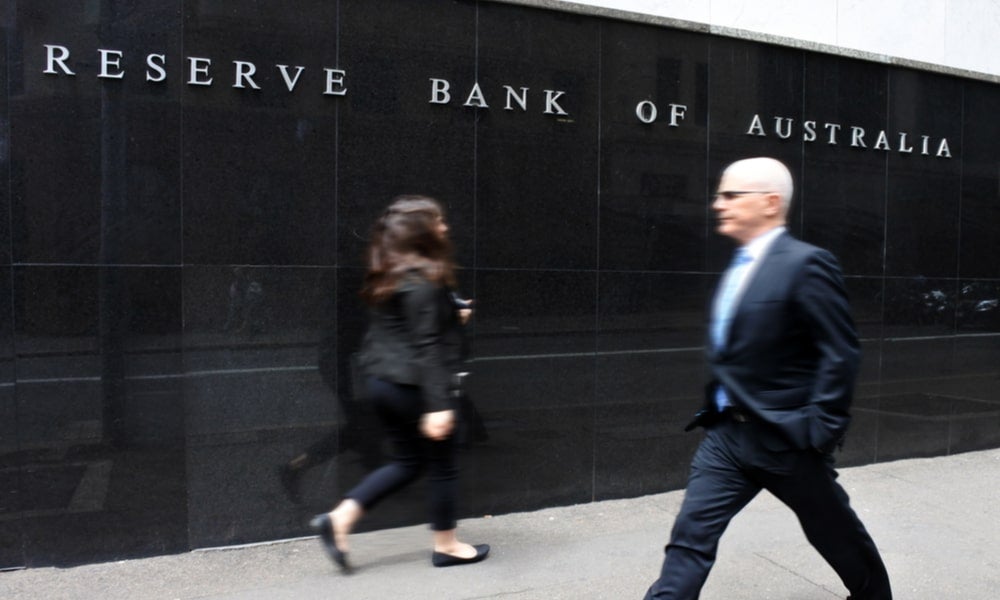Investing in the stock market: buy shares now or hold off?
Share markets are in turmoil, with volatility that hasn’t been seen since 2020. And with some stock prices plummeting – is now a good time to buy?
Hide your jars of honey-money – we are currently in what finance commentators call a ‘bear market’. But just what is a bear market? Like its namesake, a bear market can be quite scary (particularly for investors) as the value of stocks falls over a long period of time across the general market.
For investors, this might mean a stock they bought for $100 is now worth $50 (give or take). This means a considerable loss if they’ve invested a lot in that stock. The Nasdaq composite, a U.S. stock market index representing thousands of companies, as well as the Dow and the S&P 500 have all recorded heavy losses in the past three months. In Australia, the ASX 200, a stock market which tracks the largest 200 of Australian listed companies, is also down.
While it does not yet represent a financial crisis, the mood is undoubtedly gloomy. But on the flip side, is a downturn in stock prices offer a silver lining for first-time investors? There might be some who see buying stocks might seem like an attractive investment buying opportunity – especially when it can feel like housing investment is out of reach for many. And when it seems like stocks that are priced low in the short-term could rise, a future sell-off might be seen as an alternative investment into financial security.
But is this actually an accurate way of thinking? And what are the major risks when beginners attempt to jump into the market without a clear investment strategy? Jerry Parwada, Professor of Finance and Director of Academic Strategy at UNSW Business School is an expert in investments, financial markets and how they work. He explains what is happening on the markets and what you need to consider before you buy in.

Why have markets taken a dip recently?
Prof. Parwada: The market has recently been characterised by both increased volatility and a dip. In the year to-date, though, the ASX 200 has dropped by 12 per cent.
Certainly, the long-running upward trend in stock prices or ‘bull run’ in asset prices has been cut short by the recent decisions by the board of the Reserve Bank of Australia (RBA) to start raising interest rates from the all-time low levels they had sunk to – something Australia carried for much longer than most other industrialised economies.
Markets whose assets are priced in relation to interests such as bonds and term deposits with banks become more attractive when interest rates are raised because, in general, an increase in interest rates is inversely related to the value of fixed income assets – making these assets relatively cheaper and more attractive.
The laws of demand and supply mean that the equities become relatively less attractive.
Read more: How investors can hedge against inflation in times of uncertainty
Why didn’t investors see this market volatility coming?
Prof. Parwada: If market investors had considered this drop in demand and stock value at the time, they could have ‘priced-in’ the effects of interest rate increases on future asset prices as inflation picked up in the rest of the world.
But the volatility we are seeing is explained by the surprise element – the RBA had long promised that interest rates would only start rising in 2024. This has happened sooner, and the consequence is increased volatility, and even a likely sustained dip.
Are Australian markets being impacted less than other countries?
Prof. Parwada: It is not possible to directly compare Australia with other markets because of the timing of us moving towards higher interest rates. Australia has lagged behind comparable economies such as the UK and U.S.
It is notable, though, that other markets (such as in the U.S.) have experienced more pronounced drops in stock valuations. This is because the core signal of imminent increases in interest rates – inflation – started rising in countries such as the UK and the US well ahead of and at a much bigger pace than Australia. For example, while inflation in Australia in the period 2020-2022 remained below five per cent, the US and the UK raced ahead towards their current near-double digit rate.
The US Federal Reserve (the Fed) signalled in statements that there would be rising interest rates in the near future, while the RBA was promising a hold until at least 2024.

Is this kind of dip common? What causes them?
Prof. Parwada: Volatility is a common feature of equity markets. Over a long-term period of 20 years, for example, the ASX200 has risen by upwards of nine per cent.
But in that period, there have been times of significant falls, followed by recovery. Examples are the slump of 2008-2009 coinciding with the Global Financial Crisis (GFC), and the significant drop of 2020 due to the onset of the COVID-19 pandemic.
There have been smaller dips, for example when the final report of the Royal Commission into Misconduct in the Banking, Superannuation and Financial Services Industry was released in 2019, driven by the drop in the share prices of banks whose stocks comprise a significant share of the ASX 200 index.
Read more: Three useful things to know about fear economics (and how to contain it)
Are some areas of the market particularly volatile right now?
Prof. Parwada: In times of uncertainty there are some predictable behaviours of market participants that generally show up in the overall performance of the stocks that make up a broad index, such as the ASX 200.
Looking at the full past month of June 2022, for example, the steady performers that even recorded a positive return on average were consumer stocks: meaning the stocks of companies that produce products that consumers often are not willing to give up even when the cost of living goes up (such as food or household products).
These are known to be ‘defensive stocks’ to which investors flock in times of uncertainty and have lower risk tolerance. These stocks have less volatility and risk, but generally slow growth.
On the other hand, resource stocks – shares of firms that produce and sell a range of commodities such as metals, oil, and fertilisers – tend to be characterised by high investor sentiment in good times that ebbs in times of uncertainly. This reflects natural expectations by the public that demand for such resources falls in times of uncertainty. As such, resource stocks have experienced more volatility and bigger share price losses.
Not all the share price dynamics are related to interest rates, though. Geo-political events such can the Ukraine-Russia war and the energy supply chain have raised the cost of energy around the world. Accordingly, energy stocks are the second-best performers after consumer staples.

What are the risks of investing now for non-professional investors?
Prof. Parwada: Conventional wisdom says trying to time the market for individual investors is generally a losing game, especially in times of global uncertainty.
Appropriately qualified advisers will offer investment advice that matches investors’ risk appetites to the right investment choices. In the case of individuals with low-risk appetites, low transaction cost investments using vehicles that prioritise long-term outcomes for the long-term investor can be found.
What about the benefits?
Prof. Parwada: As illustrated by the long-term performance of the ASX 200, for low-risk-appetite investors, the returns are quite attractive, with investors often able to ‘get back’ on their initial investments.
Read more: 3 useful things to know about stocks and market manipulation
What advice would you have for non-professional or first-time investors?
Prof. Parwada: If you are a non-professional or first-time investor, you are best advised by a qualified professional such as a financial advisor.
You should indicate upfront that you are inexperienced and be prepared to discuss your risk appetite. They can then assist in starting your investment journey or in ‘stock picking’ for what to add to your investment portfolio.
For those who prefer not to take advice, the option is to learn about low-fee index-related investments that do not involve day-to-day ‘market timing’ to buy and sell stocks.

Are there safer investments currently?
Prof. Parwada: A ‘safer’ investment is a matter best assessed with full knowledge of the individual’s circumstances and their financial goals.
As much as commentators like to make sweeping statements about investment options that claim to fit all people, it takes a qualified, non-conflicted and ethical advisor to patiently explore such issues and help individuals to invest.
One thing that good advisors will look for is the income projectile – the steps they are taking to make a profit – of a client, together with their projected tax status. A full assessment of such factors then provides answers as to the suitability of investments, including those that promise to utilise super savings.
Subscribe to BusinessThink for the latest research, analysis and insights from UNSW Business School
What do first-time investors need to know?
Prof. Parwada: Be prepared to learn about market fundamentals so that you at least appreciate what drives the value of financial assets.
Armed with such knowledge, you can gainfully engage in the necessary financial self-assessment that will benefit your entry into investing – whether by yourself or with the help of a good advisor. And please – be wary of scams and 'flavour of the month' investment options that promise too good to be true returns!
Jerry Parwada is a Professor of Finance at UNSW Business School. His research specialises in investment management and financial markets and he has experience in investment banking and consulting to industry on issues relating to funds management, security valuation and market quality. For more information please contact Prof. Parwada directly.
